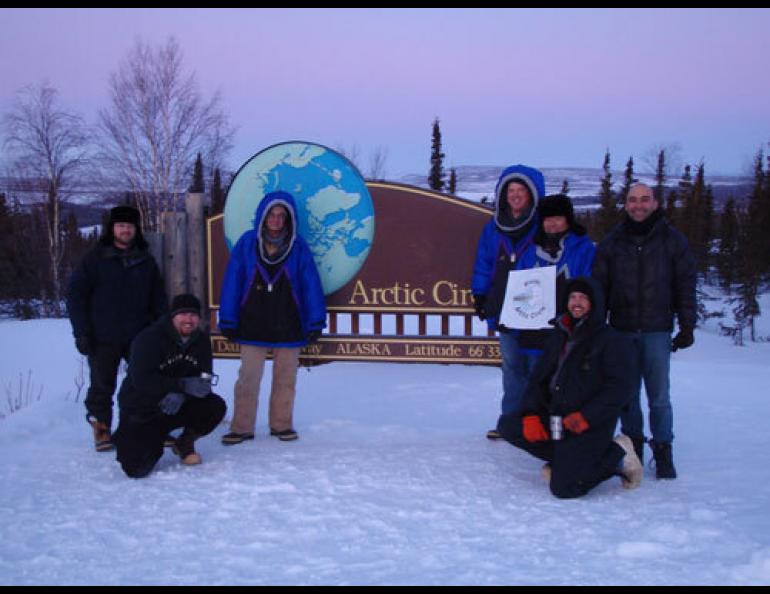
Biofuel chugs on during a cold Alaska night
Bernie Tao wasn’t looking forward to camping out at the Arctic Circle.
Tao, a professor of agricultural and biological engineering at Purdue University, hadn’t been to Alaska before. He also hadn’t camped in below zero temperatures since he was a Boy Scout. The National Weather Service called for the temperature to drop into the minus 20s, which was good for an experiment with biodiesel fuel, but not for sleeping. Making the outing even more difficult was the fact that Tao, who helped develop a method to make biodiesel flow at low temperatures, already felt he knew the outcome of a test that involved driving a few biodiesel-fueled vehicles to the Arctic Circle and running a generator on the substance overnight.
“I know it works,” he said in Fairbanks before heading north.
Tao slept in a tent at the Arctic Circle pull-off on the Dalton Highway with a half a dozen others as a generator purred all night, even when the temperature dropped to minus 23 degrees Fahrenheit. Their diesel-powered vehicles fired up the next morning, too, showing the viability of “Permaflo Biodiesel” in a cold place. A group representing soybean farmers, the Indiana Soybean Alliance, sponsored the trip.
“Both the generator and the vehicles didn’t sputter once,” said Andy Soria, a member of the biodiesel convoy and a biofuel-developer with the University of Alaska Fairbanks’ Palmer Research Station. Soria drove 1,401 miles around Alaska on the biofuel developed in part by Tao.
“It’s the first time this has ever been done at temperatures lower than 0 degrees Fahrenheit,” Soria said.
Alaskans using vegetable oil converted to biodiesel can’t easily use straight biodiesel at temperatures below about 0 degrees Fahrenheit because it clouds up and begins to solidify. Tao developed a patented process of distilling the fuel using urea in which the fuel can remain liquid to minus 60 Fahrenheit. He is also able to recycle the urea for later batches of fuel.
“We have been able to fix that problem (fuel-gelling at cold temperatures) completely, at low cost,” Tao said.
Though biodiesel is “10 percent less energy dense” than traditional diesel, Tao said biofuels could really work in Alaska.
“You can make it from any oil—fish, canola, soybean or waste grease,” he said. “People can make it on demand if they have a source.”
Soria sees two practical options for biofuels in Alaska. The first is that Alaskans create a biofuel cooperative similar to those in San Francisco and Kokomo, Indiana. Local governments in both places require restaurants to save their used cooking oil for the cooperative, where people make it into biofuel by filtering it and adding a few ingredients, such as methanol and lye.
The second option that might work in Alaska is the production of canola crops in areas like Delta Junction or Palmer. An advantage of Alaska canola is that is doesn’t mature to the point where people would want to eat the seeds, Soria said, but in Alaska’s short growing season it does develop to the point where the seeds contain a good deal of oil. Soria’s colleagues at UAF’s Agricultural and Forestry Research Station are working on trying to coax more oil out of Alaska canola plants.
“(UAF’s) Mingchu Zhang is trying to develop methods to trick the plants into maturing earlier in the season,” Soria said.
While biofuels aren’t the silver-bullet solution for current energy problems, Tao said something will replace petroleum products, and biofuels can help span the gap.
“We have to transit from where we are now,” he said. “This fuel makes a whole lot of sense.”




